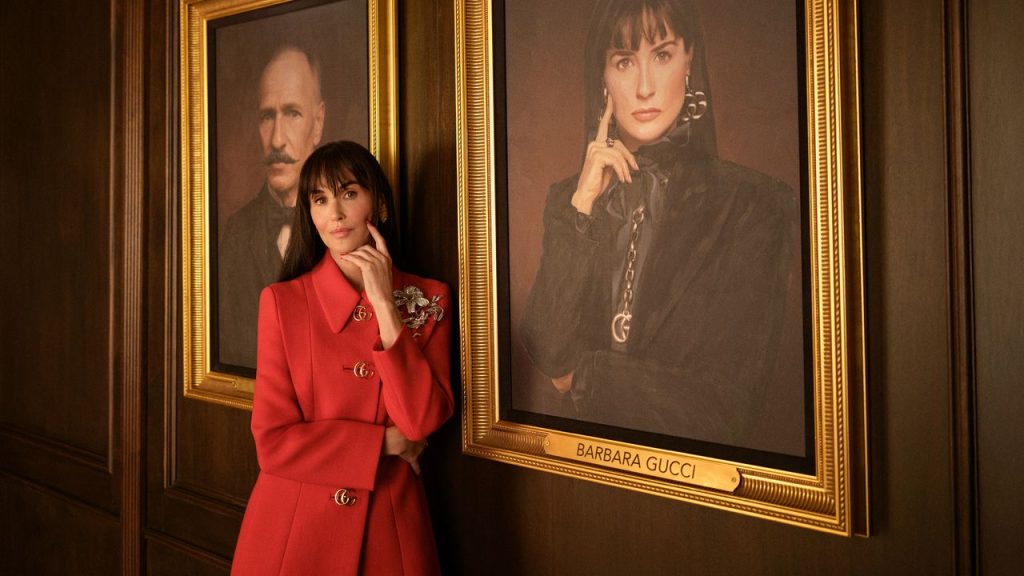SJ: The starting point was a call from Demna: he said he would like the film to be about a matriarch and her family. Then he sent us all the photos of the lookbook, all his new clothes worn by models, with all the names of the individual characters—but maybe I would say they are rather archetypes—explaining what the Italian names he gave them meant, like Il Bastardo. He was very precise, but at the same time very open: an approach that made this work very challenging.
Was it easy to write the script?
HR: Well, we were certainly a little bit under time pressure, but that pressure made it very fun. We worked in a very different way than usual—it was unique how much artistic freedom we all had.
What was it like having two people direct a film?
SJ: First we did a kind of mind meld, a kind of six-week meditation, like 8 hours a day, to foster nonverbal communication. I recommend it for any kind of collaboration.
Good advice. If you were to write a short synopsis of this film, for example for Wikipedia, what words would you use?
SJ: I don’t know, I’m not allowed to edit Wikipedia entries.
HR: I would just use one question, ‘What would you do if you were in a room with a tiger?’
Here, what would you do in a room with a tiger?
HR: I can’t answer that, you have to see the movie. What would you do?
I would negotiate.
HR: Makes sense: Negotiate to tame it.
The soundtrack is fantastic. How did you mix such different songs together?
SJ: When we were writing the film, I created a playlist that I shared with Halina and Demna: the beautiful Italian song, “Guarda che luna,” he found it. You know, a lot of these songs, like “Mood Swings” and “Nosebleeds,” are songs I’m obsessed with, they’re songs I love by two artists I really like, Little Simz and Doechii. The playlist, which was later completed by Cristobal Tapia de Veer, also kind of shaped the story. The whole process was crazy, very fast, almost wild: it’s a 30-minute film, which we edited in three weeks. Usually, it takes much longer. I could almost call it a stream of consciousness: the writing, the shooting, the editing… it was a continuous movement, which we let flow freely, without thinking too much about anything.
The costumes, of course, are a key part of the film. Did they influence the filming in any way?
SJ: From an actor’s point of view, I think the wardrobe can define the character in a certain way. When we rehearsed, one of the most beautiful things was to see the outfits in their detail and construction before they were even worn: some of them are incredibly intricate, with all these embroidered beads… I think the costumes helped the actors understand right away and precisely what their characters looked like.

